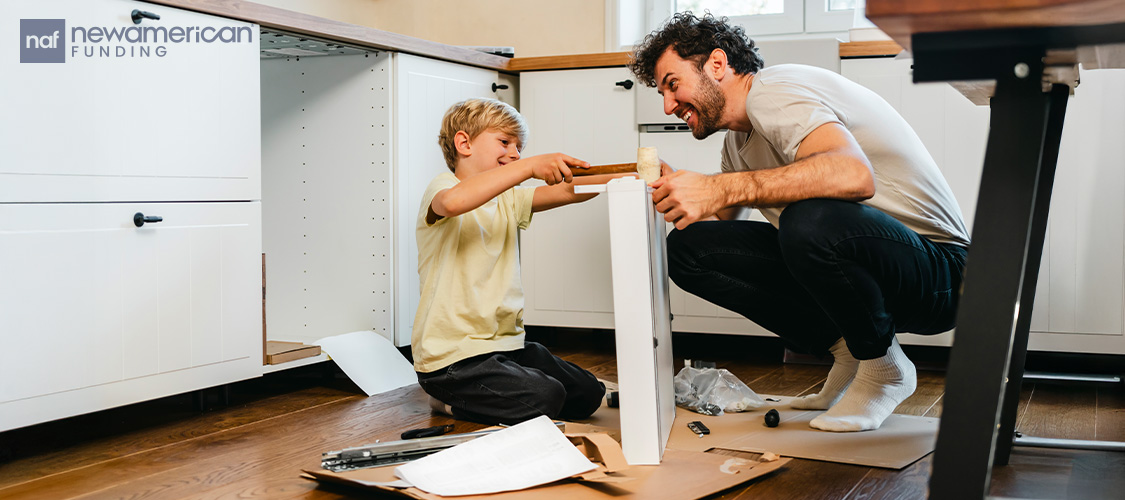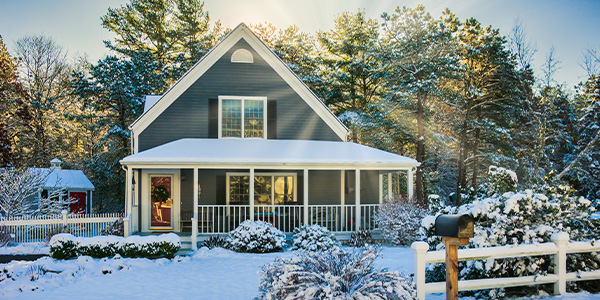Homebuyers
Creative Ways for Veterans to Tap into Their Home Equity
June 23, 2025
Unexpected homeowner expenses often seem to crop up at the worst times. Maybe it’s a leaky roof that needs to be replaced or broken HVAC unit that needs repair. Or perhaps a homeowner is facing large medical expenses or wants to consolidate high-interest credit card debt into a single lower-interest loan.
For homeowners with U.S. Department of Veterans Affairs (VA) loans, there’s good news. Eligible service members, veterans, and military spouses can tap into the equity in their homes to get cash to pay for many expenses through one of several different loan programs.
“These programs can be especially helpful for veterans, who often face a higher degree of financial uncertainty than other homeowners,” said Anthony Ramirez, a loan consultant with New American Funding. He’s based in San Diego, Calif. “Many veterans aren’t aware of how these loan programs can help them meet financial challenges.”
VA cash-out refinance
A VA cash-out refinance is one of the most attractive tools for veterans to tap into their home equity. This is a brand-new loan that replaces your current mortgage with a new loan for more than you owe on your existing mortgage. You then receive the difference in cash.
In most instances, you can borrow up to 90% of the value of your home with a VA Cash-Out refinance.
One of the biggest benefits of this loan is its flexibility. There are generally no restrictions on how you use the cash—it’s totally up to you.
There are drawbacks to these loans, though. Fees, ranging from 3% to 5% of the loan amount, must be paid at closing and cannot be rolled into the loan.
You must also occupy the home as a primary residence to qualify for the loan.
VA streamline refinance loan

The VA Interest Rate Reduction Refinance Loan (VA IRRRL), better known as a VA Streamline refinance, is another creative financing option for veterans.
Since you’re refinancing from one VA loan program to another, the application process is relatively fast and easy, with no credit check and less paperwork than a traditional refinance.
“Thus, the name streamline refinance loan,” said Ramirez.
In addition to generating cash to meet unexpected expenses, a VA Streamline loan could also lower your mortgage interest rate.
“Let’s say that interest rates go down soon after you buy a home. With a traditional mortgage you can’t refinance to take advantage of this if you haven’t built enough home equity yet,” said Ramirez. “But with a VA Streamline loan you can.”
You also have the option of converting from an adjustable rate to a fixed rate to lock in a lower interest rate or shortening the length of the loan to pay it off sooner.
There are minimal out-of-pocket costs, fees are low, and no appraisal is required. This can speed up the closing process.
Also, you do not currently have to occupy the home, so rental and second homes could potentially qualify. But the home must have previously been used as your primary residence.
Note that a VA Streamline loan can only be used to refinance an existing VA mortgage. If you have a non-VA mortgage, a VA Cash-Out refinance loan may be a better option.
Home equity loans and HELOCs

In addition to these VA-specific programs, you might also consider a home equity loan or Home Equity Line of Credit (HELOC). These loans help you tap into your home equity.
A home equity loan is a separate loan from your current mortgage that creates a second lien against your home without impacting your first mortgage.
Upon closing, you’ll receive a lump sum of cash that you can use for whatever purpose you desire. These loans usually have a fixed interest rate and repayment timeline.
Keep in mind that home equity loan interest rates are typically higher than regular mortgage rates and credit score requirements may be stricter.
As the name implies, a HELOC is a line of credit backed by the equity you’ve built in your home. It also creates a second lien against your property. But instead of receiving a lump sum of cash at closing, you will borrow money when you need it (up to your approved credit limit) like with a credit card.
HELOCs are often used to finance home renovation projects that increase the property’s long-term value, potentially making them a good investment.
Anthony Ramirez NMLS # 249819






 Smart Moves Start Here.
Smart Moves Start Here.